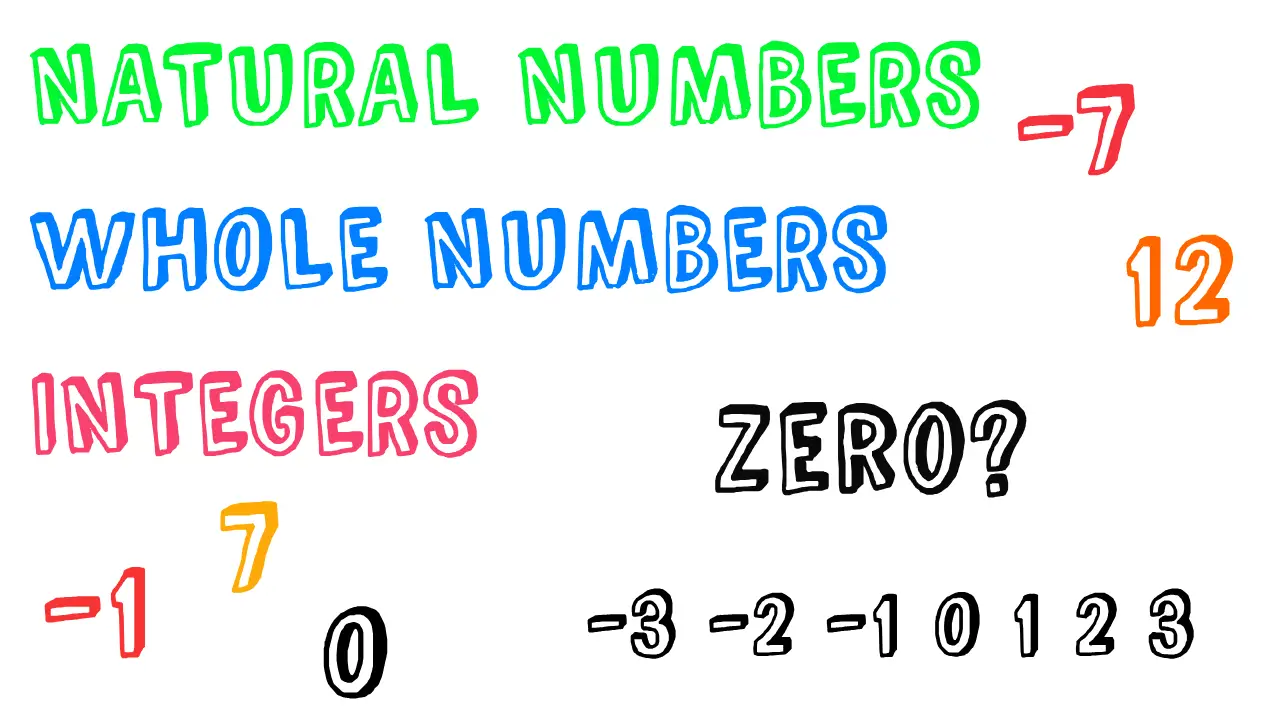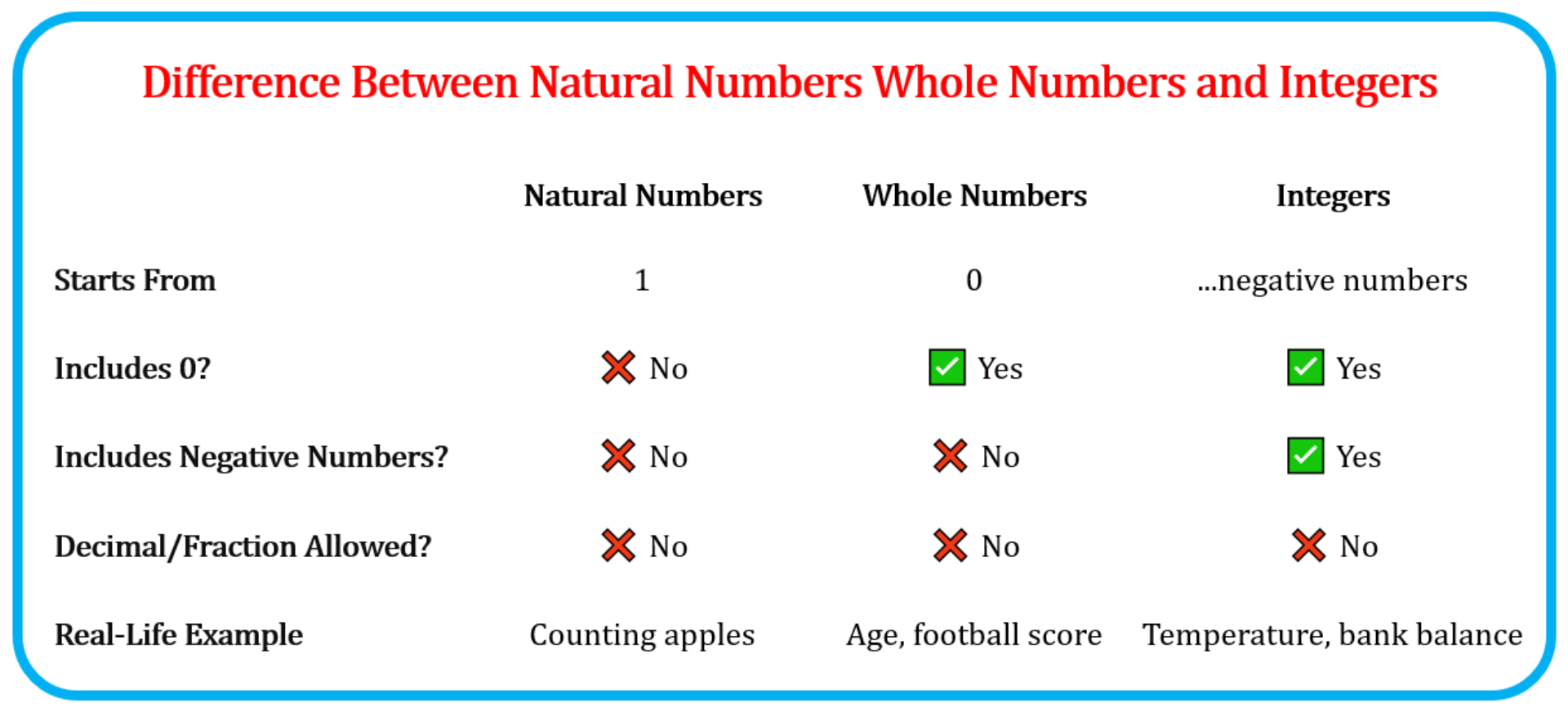Difference Between Natural Numbers Whole Numbers and Integers
Difference Between Natural Numbers Whole Numbers and Integers
Natural numbers start from 1. Whole numbers include 0 and all natural numbers. Integers include positive numbers, negative numbers, and 0. Each set expands on the previous by including more values.

Math starts with numbers but all numbers are not same. We often hear about natural numbers, whole numbers, and integers. They might sound similar, but they are not quite the same.
Today you will learn about the difference between natural numbers whole numbers and integers in the simplest possible way.
Quick Definitions
Type | Definition |
Natural Numbers | Counting numbers starting from 1 (1, 2, 3, …) |
Whole Numbers | Natural numbers plus 0 (0, 1, 2, 3, …) |
Integers | All whole numbers and their negatives (..-2, -1, 0, 1, 2…) |
👉 Check out for more Learning Materials in our Learn Maths Section!
What Are Natural Numbers?
Definition: Natural numbers are the positive numbers we use for counting things. It starts from 1.
Examples:
Natural numbers do not include:
Real-life use:
What Are Whole Numbers?
Definition: Whole numbers contains all the natural numbers including 0 (zero). It starts from 0.
Examples:
Whole numbers do not include:
Real-life use:
What Are Integers?
Definition: Integers include all positive numbers and negative numbers and zero.
👉 Practice what you learned with our Integers Worksheet .
Examples:
Real-life use:
Comparison Chart
This chart shows the Difference Between Natural Numbers Whole Numbers and Integers

Difference Between Natural Numbers Whole Numbers and Integers Chart
Easy Ways to Remember
Conclusion
I hope through this simple and clear guide, you’ve understood What is the Difference Between Natural Numbers Whole Numbers and Integers. These basic number types are the building blocks of mathematics and show up in everyday life – whether you’re counting objects, checking temperatures, or managing money.
Frequently Asked Questions
What is the difference between natural numbers whole numbers and integers?
Natural numbers start from 1, whole numbers include 0 plus natural numbers, and integers include both positive and negative numbers (including 0).
is integer a whole number?
An integer is not always a whole number. While every whole number is an integer, not every integer is a whole number. Whole numbers include only non-negative numbers like 0, 1, 2, 3, and so on. Integers, on the other hand, include both positive and negative numbers along with zero. For example, 5 is both a whole number and an integer, but -5 is only an integer, not a whole number.
Can natural numbers be negative integers?
No, natural numbers cannot be negative integers. Natural numbers are used for counting and always start from 1 (i.e., 1, 2, 3, 4, …). They do not include 0 or any negative values, so numbers like -1 or -5 are not natural number
Can integers be negative fractions?
No, integers cannot be negative fractions. Integers are whole numbers, either positive, negative, or zero (e.g., -3, 0, 4). A number like -2.5 or -1/2 is a negative rational number, but it is not considered an integer because it includes a fractional part.
Is -1 an integer?
Yes, -1 is an integer. Integers include both positive and negative whole numbers along with zero. So, numbers like -3, -2, -1, 0, 1, 2, 3… are all part of the integer family.
What is the smallest whole number and why?
The smallest whole number is 0 because whole numbers start from 0 and include all positive counting numbers after that.
